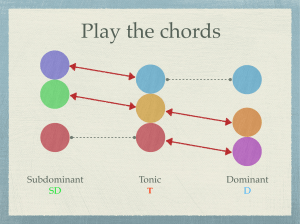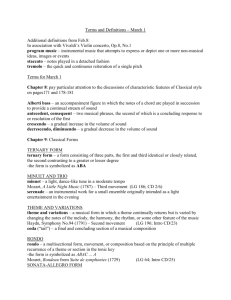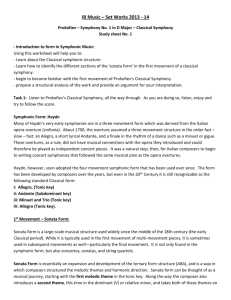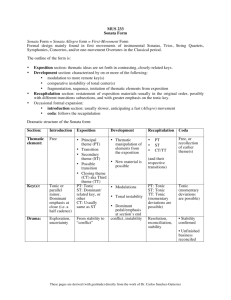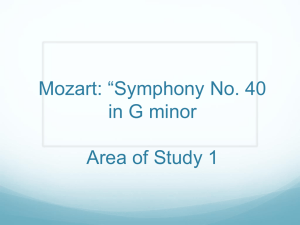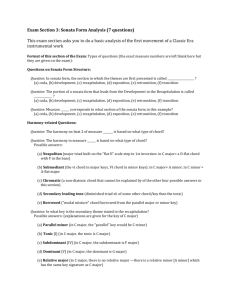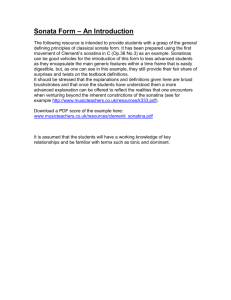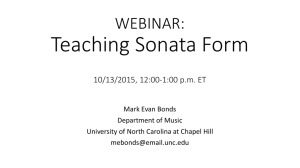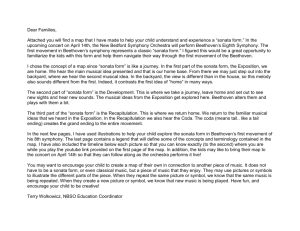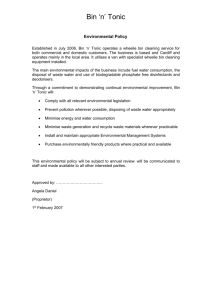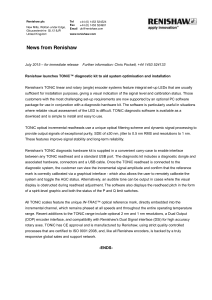Sonata Allegro form
advertisement
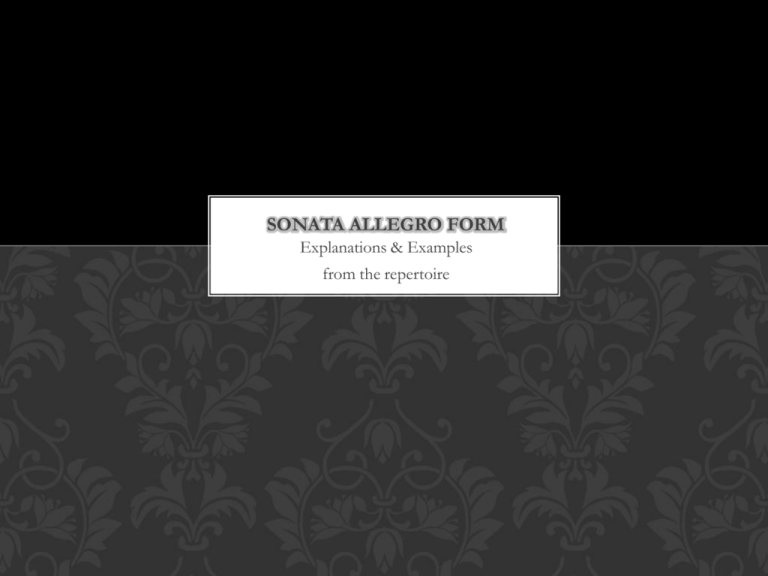
SONATA ALLEGRO FORM Explanations & Examples from the repertoire OUTLINE OF SONATA FORM Introduction Exposition Development Recapitulation Coda INTRODUCTION • The introduction is a short opening section at the beginning of the work. • It is the composer’s choice whether there is an introduction; it is optional • If it is extended it is harmonically centered around the dominant • Compositionally the introduction may include material to be further developed in the exposition; it gives the movement a bit more ‘gravitas’, especially if the main thematic material is ‘too light’ for an opening movement. EXPOSITION • • • • • • The main thematic material for the piece; where we first here the different tunes used throughout the movement. They all begin in tonic and then are usually heard a second time in a different key. This movement can be broken down in the following way: First subject group (Prime) – one or more themes all in tonic Transition (T) – transition from key of first subject group to the second Second subject group (S) – one or more themes in a different key; in a major key this section is in the dominant – in minor it will usually be in the relative major. There is frequently a different musical texture (more lyrical) Codetta (K) – brings the section to close; perfect cadence in the same key as (S) – often repeats the material from (P), once in tonic and the second time leading toward the development DEVELOPMENT • • • • • • • Begins in the same key the exposition ended in and will change key many times Consists of one or more altered themes from the exposition and may contain new material Often times alterations in the development may involve taking themes through several different key changes, adding new material, breaking down themes into smaller sections, sequencing motifs, etc… Section length varies by composer: Classical composers valued symmetry (sections didn’t linger so long); Romantic composers tended to really give it hell in the development and they could be quite lengthy Toward the end, the material will return to the tonic in preparation for the recapitulation – it may visit the subdominant (IV) before heading toward tonic RETRANSITION – huge dominant seven section before returning to the main theme in tonic Has a greater degree of tonic instability than the other sections RECAPITULATION • First subject group; given high prominence throughout – usually in the same key and form as the exposition • Transition – new material with a tiny development section; this is called the secondary development • Second subject group; now played in the tonic key – sometimes involves a change of major to minor or vice versa, or in the parallel key. Key is more important than mode • After the final cadence (when the musical ideas are technically closed) if there is more material it is said to have a CODA CODA • Vary in length; added to the end of the recapitulation after the musical themes have been worked out and are technically closed • Ends with a perfect cadence in the original key • What occurs in the coda is up to the composer; Beethoven would use it to work out a few new musical ideas.

